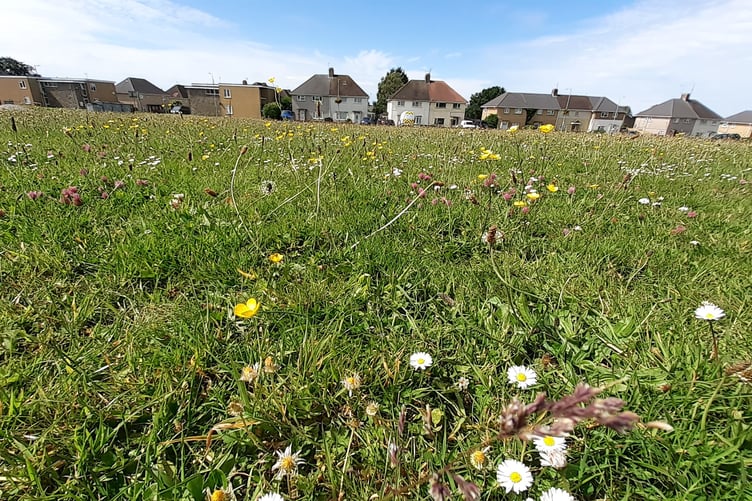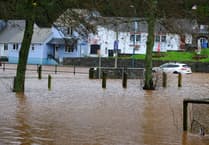Areas of grassland managed by Carmarthernshire Council will hum with bees and other pollinators under plans to convert it into wildflower and meadow habitat.
The authority is mapping what it described as its amenity grassland – green areas within town and villages, for example – as part of a strategy to attract pollinators by providing them somewhere to forage and lay their eggs, and to create a more colourful and varied canvas for people to enjoy.
Although it’ll mean less mowing, it will still require management – and the council stressed that not all amenity grassland will be used in this way.
The draft strategy said sports fields, footpath and cycle path edges would still be cut regularly, among others. The strategy also excludes council-owned farmland.
Introducing the plans at a council place, sustainability and climate change scrutiny meeting, Cllr Aled Vaughan Owen cited findings from last month’s State of Nature report, which said 16% of 10,000 mammals, plants, insects, birds and amphibians assessed in the UK were at risk of extinction. Species abundance, it said, was 19% higher in 1970 than today.
The draft strategy said: “Regularly-cut, closely-mown grass may be perceived as tidy but has little benefit for wildlife. Grass that is cut with a longer interval will still be quite short but will allow plants to flower provide food for pollinating insects such as butterflies, hoverflies, beetles and bees.
“Grass that is managed as a meadow provides food and shelter for a range of wildlife. Reducing mowing allows plants to grow bigger root systems, storing more carbon in the soil.”
The grassland areas selected as part of the new approach would be mown every six weeks, allowing short-flowering plants to complete their cycle and increasing the nectar available to insects, or twice a year to create meadow habitat.
Signs would be put up at both types of sites explaining why they’re being managed in these ways.
A large area of green space at Heol Gwili, Llanelli, is already being managed on the six-weekly mowing cycle, following consultation.
Speaking at the committee meeting, Rhodri Griffiths, the council’s head of place and sustainability department, said: “What we are doing is not a cost-cutting exercise. It’s absolutely about doing the right things to encourage pollinators.”
Cllr Peter Cooper said a wildflower patch by sheltered accommodation in his ward was mown regularly, and that when he asked the workers why they did it, he said they replied that they’d been told to.
“That is absolutely the kind of behaviours were are trying to change,” said Mr Griffiths. Gary Baxter, head of grounds and cleansing, said regularly mowing wildflower areas was not a council directive.
County Councillor for Whitland, Cllr Sue Allen asked if the strategy could be adopted by other organisations which managed grassland, like community councils and sports clubs, and was told it could.
Committee chairman, Cllr Kevin Madge, said birds had eaten his beetroot and lettuce for the last three years after not doing so for the previous 37. “Why are they doing it?” he said. “Lack of food.” He said he’d also noticed a drop in butterflies. “We need to encourage people to grow flowers,” he said.
Work on the draft strategy, which said failure to use land in a way which benefited pollinators risked compliance with the 2016 Environment Act, will continue prior to its consideration by cabinet.
Cllr Dorian Phillips said he was frustrated that initiatives such as the one under discussion were being considered when farms in the county were being bought for tree-planting.
He said he was due to meet a landowner with 180 acres that were being given over to new conifers. Cllr Phillips said this would spell the end of 10 to 12 miles of hedgerows after around five years as the growing trees obscured them. “It does not make sense,” he said. “There’s nothing in planning (that councils can do) – they’re allowed to do it.”





Comments
This article has no comments yet. Be the first to leave a comment.